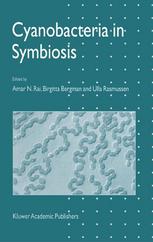

Most ebook files are in PDF format, so you can easily read them using various software such as Foxit Reader or directly on the Google Chrome browser.
Some ebook files are released by publishers in other formats such as .awz, .mobi, .epub, .fb2, etc. You may need to install specific software to read these formats on mobile/PC, such as Calibre.
Please read the tutorial at this link: https://ebookbell.com/faq
We offer FREE conversion to the popular formats you request; however, this may take some time. Therefore, right after payment, please email us, and we will try to provide the service as quickly as possible.
For some exceptional file formats or broken links (if any), please refrain from opening any disputes. Instead, email us first, and we will try to assist within a maximum of 6 hours.
EbookBell Team

4.7
76 reviewsCyanobacterial symbioses are no longer regarded as mere oddities but as important components of the biosphere, occurring both in terrestrial and aquatic habitats worldwide. It is becoming apparent that they can enter into symbiosis with a wider variety of organisms than hitherto known, and there are many more still to be discovered, particularly in marine environments. The chapters cover cyanobacterial symbioses with plants (algae, bryophytes, Azolla, cycads, Gunnera), cyanobacterial symbioses in marine environments, lichens, Nostoc-Geosiphon (a fungus closely related to arbuscular mycorrhiza fungi) symbiosis, and artificial associations of cyanobacteria with economically important plants. In addition, cyanobiont diversity, sensing-signalling, and evolutionary aspects of the symbiosis are dealt with. Renowned experts actively involved in research on cyanobacterial symbioses deal with ecological, physiological, biochemical, molecular, and applied aspects of all known cyanobacterial symbioses.
This volume on cyanobacteria in symbiosis complements the two earlier volumes on cyanobacteria published by Kluwer (Molecular Biology ofCyanobacteria, edited by D.A. Bryant and Ecology of Cyanobacteria, edited by B.A. Whitton and M. Potts). Together, the three volumes provide the most comprehensive treatment of cyanobacterial literature as a whole. The book will serve as a valuable reference work and text for teaching and research in the field of plant-microbe interactions and nitrogen fixation.